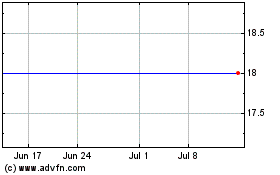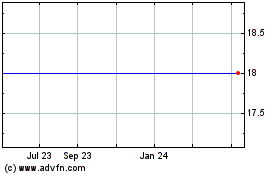By Alexandra Wexler
JOHANNESBURG--Just over a year ago, South African miner Sibanye
Gold Ltd. simply dug up its namesake yellow metal in its home
market. Now the company is poised to become the world's
third-largest producer of palladium as well, with three sizable
acquisitions over the last 15 months, crowned by Friday's
announcement that it plans to buy U.S. palladium and platinum miner
Stillwater Mining Co. for $2.2 billion.
The moves illustrate the tectonic shifts recalibrating the
global mining industry after the commodities bust. The Stillwater
purchase is Sibanye's first foray outside of Southern Africa and
its latest bold move to diversify beyond gold mining.
The acquisition is also a vote of confidence in the platinum
group of metals, which includes platinum and palladium, most
commonly used in the auto industry to reduce engine emissions, in
addition to a strategic diversification away from the
often-difficult operating environment in South Africa.
Sibanye has a long and storied history in the mining industry.
It was spun off in 2013 from three aging South African mines held
by Gold Fields Ltd., a company founded by colonial pioneer Cecil
John Rhodes.
In a press release Friday, Stillwater, of Littleton, Colo.,
which has two mines in Montana and Colorado, said its board
approved the deal. The $18-a-share bid represents a 23% premium to
Stillwater's closing price on Dec. 8. The two largest shareholders
of Johannesburg's Sibanye have confirmed their support of the
deal.
In an interview Friday, Sibanye Chief Executive Neal Froneman
said he has previous experience operating in the U.S. "It's a
jurisdiction I quite like," he said. "With Mr. Trump becoming
president, it didn't make us go fast or slower, but fortuitously,
he's probably more friendly toward mining and sees the necessity of
it."
Mr. Froneman also said he doesn't plan to come in and run the
business with a whole new South African team.
"It's business as usual for us," said Mick McMullen, chief
executive of Stillwater.
Stillwater is an attractive acquisition, Mr. Froneman said,
because it generates cash, with processing facilities and the
world's largest auto catalyst recycler, an operation that should
give Sibanye strategic insight into the market.
That recycling business "gives us a very stable cash-flow base
and a bigger voice in the marketplace," Mr. McMullen said.
Stillwater's production of platinum group of metals from recycling
currently outstrips output from the company's two mines.
Sibanye believes the transaction will improve per-share
earnings, and Mr. Froneman said Friday that the company plans to
raise new debt and equity through a rights issue sometime in the
next year of at least $750 million.
Sibanye's pivot from gold to the white metal at a time when
prices were low for both was prescient. Prices for platinum have
risen around 6% this year to around $942 an ounce, while gold is up
around 11% at $1,170 an ounce. And palladium, in which Stillwater
is rich, has jumped 32% this year to $741.70 an ounce.
Mr. Froneman turned around the company's gold operations in
South Africa by reducing inefficiencies, partly by cutting jobs and
restructuring management in addition to changing the culture at the
mines.
Still, Mr. Froneman said Sibanye remains committed to South
Africa, despite difficulties, such as aging infrastructure, a weak
currency and often disruptive labor unions, "This should not be
seen as a first step in exiting South Africa," he said.
Still, the cash earned from new U.S. operations "allows us to do
so much more in the rest of the world," Mr. Froneman said, adding
that the company would continue to be on the lookout for attractive
platinum or gold acquisitions.
Sibanye, which means "we are one" in Nelson Mandela's native
Xhosa language, agreed in September 2015 to pay at least 4.5
billion South African rand ($288.5 million) for an old mine in the
platinum town of Rustenburg.
The mine--which was owned by Anglo American Platinum Ltd., or
Amplats, a majority-owned unit of globally-diversified miner Anglo
American PLC--was one of Amplats's most labor-intensive assets.
Less than a month after announcing its Rustenburg purchase,
Sibanye offered $294 million for nearby mines owned by Australia's
Aquarius Platinum Ltd., which has operations in South Africa and
Zimbabwe.
The two deals, plus the Stillwater purchase, are expected to
turn South Africa's largest gold producer by output into the
world's fourth-largest producer of the platinum group of metals, as
well.
The latter deal gives Sibanye a foothold in Zimbabwe, home of
the world's second-largest platinum reserves after South
Africa.
Write to Alexandra Wexler at alexandra.wexler@wsj.com
(END) Dow Jones Newswires
December 09, 2016 11:39 ET (16:39 GMT)
Copyright (c) 2016 Dow Jones & Company, Inc.
Stillwater Mining (NYSE:SWC)
Historical Stock Chart
From Mar 2024 to Apr 2024

Stillwater Mining (NYSE:SWC)
Historical Stock Chart
From Apr 2023 to Apr 2024
